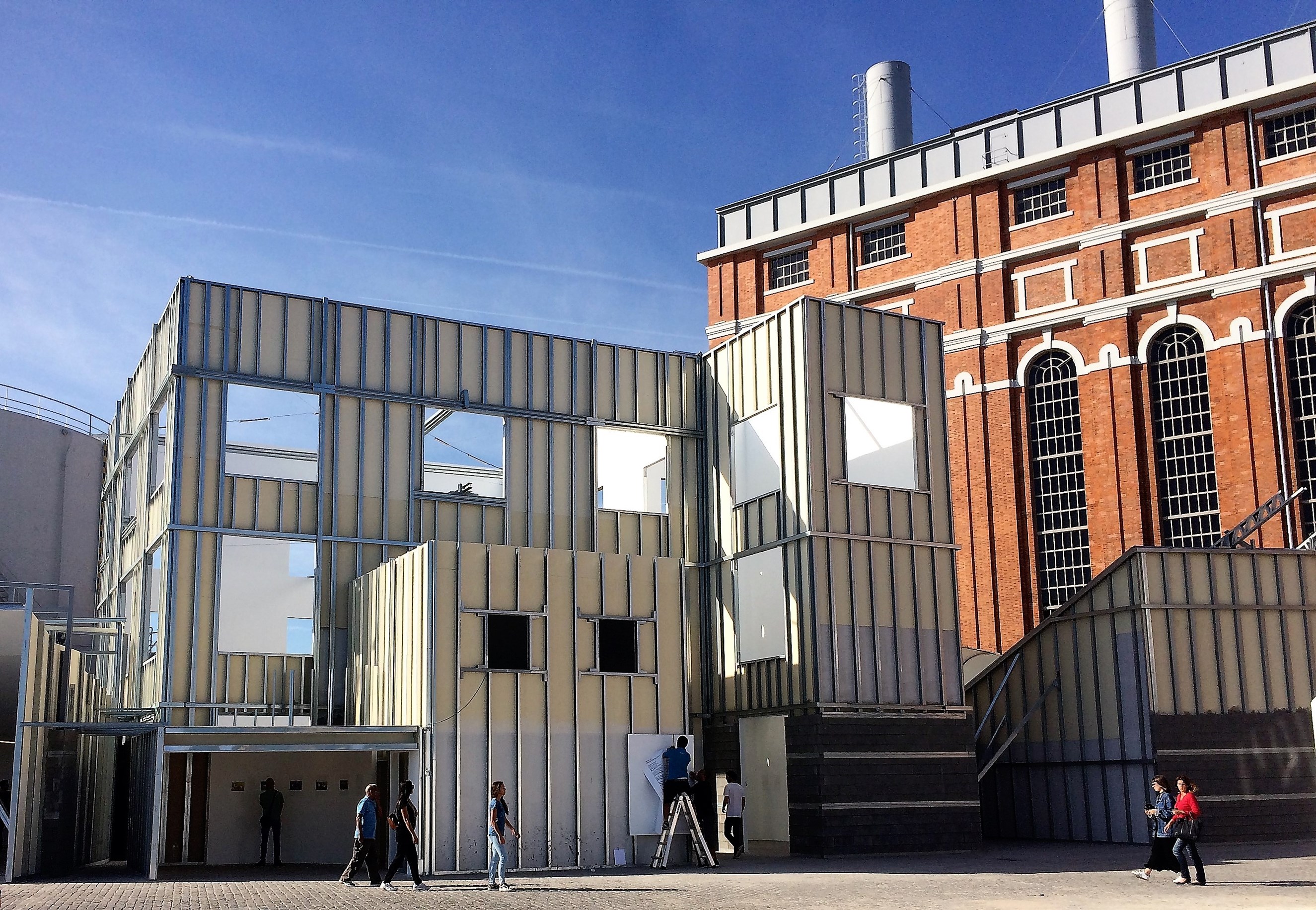CRITIQUE
The new MAAT
More than a question of form, a problem with time
Architect and curator
All Architects are formalists. We just have different ways of lying about it.
Lisbon, the afternoon of the 2016 5th of October national holiday: the Belém riverfront was packed with visitors to see the new Museum of Art, Architecture and Technology (MAAT), an institution promoted by the EDP Foundation as an addition to its Electricity Museum at the Central Tejo (Thermoelectric Tagus Power Station). That night, newspapers and television broadcasts announced that 15.000 people had crossed the railway line in the Belém area to get a close look at the new building signed by the British atelier AL_A, directed by the architect Amanda Levete. What they omitted was that on that same afternoon, on that same riverfront, many visitors were present to attend the inauguration of one of the spaces of the 4th Lisbon Architecture Triennale, specifically the building-pavilion entitled “The Form of Form”, curated by Diogo Seixas Lopes and designed by the architects Nuno Brandão Costa, Kersten Geers (Office KGDVS) and Mark Lee (Johnston Marklee), in the courtyard of the Central Tejo. The simultaneity of the two buildings in that one place – one permanent, the other ephemeral; one celebrated by the media, the other neglected – leads us to construe some considerations about the interaction between form and time (returning to a theme of the Lisbon Triennale), in the face of another relationship: that of architecture with the city.
It was the art historian George Kubler who, in his book The Shape of Time. Remarks on the History of Things (1962)2, taught us to understand the sedimentation of time (and of the city) through the permanent dialogue between objects and images (and “architectures”)3. In the English language, the concept of “form” encloses more than the appearance or style of the object (style/styling), equally alluding to the process of its shaping (shape/shaping). In this sense, for Kubler, all time possesses a form – or “mould”, as Nuno Portas usually calls it – and inversely, all form is always moulded by time, being able to survive beyond it or not.
In what way can we see these interactions on the Belém riverfront? And how can we position the new MAAT in that relationship between time and form?
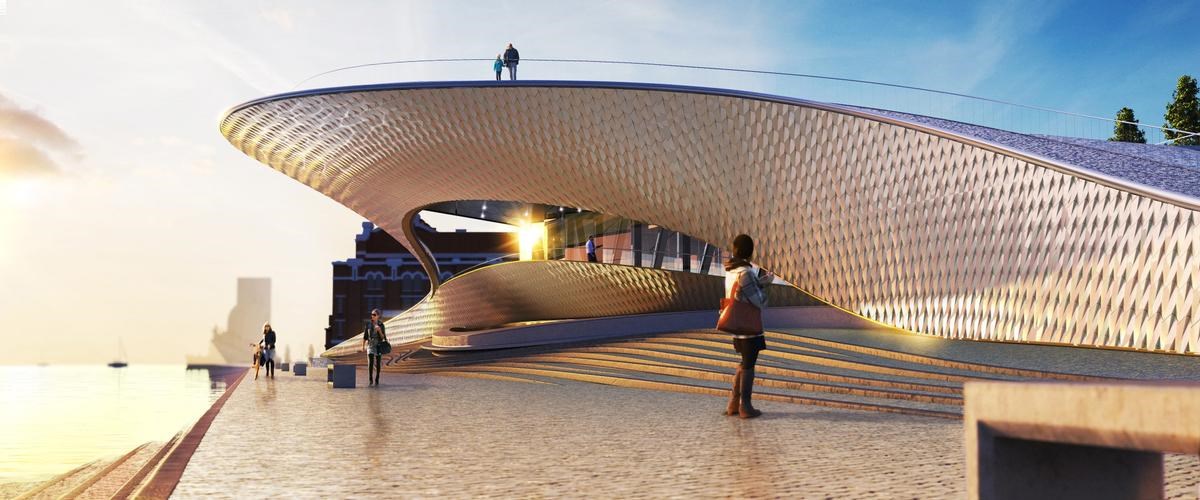
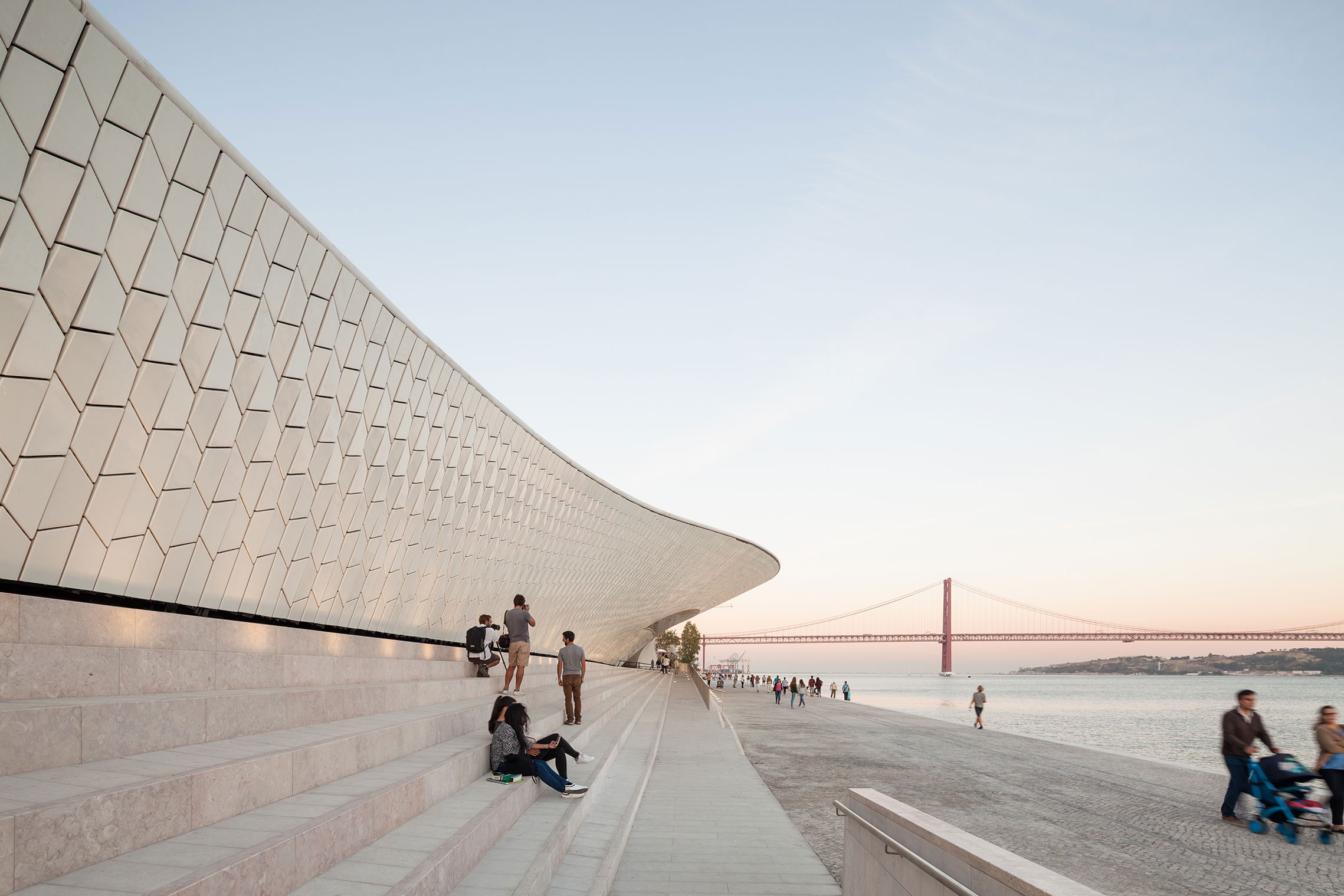
The time of the city
From the viewpoint of the city, it is possible to say that the new MAAT is unable to escape form the iconic temptation that is displayed by the other museums erected on that urban front. The historical legacy left by the mythification of the Belém area by the Estado Novo (Second Republic) – as the foundation of the Great Exhibition of the Portuguese World in 1940 – seems to inspire a certain formal monumentality in the cultural buildings erected there throughout the last decades. This is confirmed, despite good intentions, by the routes, squares and democratic terraces overlooking the Tagus projected by Vittorio Gregotti with the Belém Cultural Centre (CCB), by Paulo Mendes da Rocha with the Coach Museum and now, by Amanda Levete with MAAT. It is interesting to realize how the “postcard” perspective or the digital renders on the undulating façade of this new museum, under its public veranda, place the vanishing point either on the Padrão dos Descobrimentos or on the 25 de Abril bridge, fatally perpetuating the monumental aspiration.
Here, history repeats itself in yet another form: once again Belém has witnessed the inauguration of an architectural icon without it being completely finished – let us recall that the CCB continues to be amputated into two modules, that the Coach Museum lacks a definitive narrative, and that the new MAAT is in evident need of “finishes”. However, and above all else, construction has gone forward without tending to the requalification of the relationship of the city with the public spaces of this riverbank, which stands as little more than a “patchwork” made out of disconnected lawns, improvised esplanades, scattered parking areas, derelict viaducts and other reminiscences of bygone eras. The publicized intention of adding another pedestrian bridge (to the one proposed by Paulo Mendes da Rocha?) over Avenida Brasília and the parallel train track, integrated in the landscape project of the new MAAT, will only add another “patch” to this cluster, which is in urgent need of being rethought in a more continuous and articulated fashion.
The time of culture
Considering the cultural times we live in, it is also possible to find some contradictions in MAAT’s museum project. With its proclaimed interdisciplinary mission, the new museum takes on a thematic comprehensiveness that may paradoxically limit the disciplinary approaches that require a greater reflective and discursive specificity. Today, a cultural institution that aims to be about “everything – and for all audiences, of all backgrounds - runs the risk of becoming a project about “nothing” in particular. Here, any and all current tendencies towards the “theme-parking” of culture should be critically avoided.
On the other hand, having to exist between the achievement of “package-exhibitions” for international itinerancy and “site-specific” exhibitions by invited creators and curators, would lead one to believe that the new MAAT project would offer more conventional exhibition spaces, creating the unique opportunity of releasing the Central Tejo of museological excess – approximating it to its original condition – leading to the creation of a challenging workspace for invited artists. This is what happened, for example, with the Turbine Hall of the Bankside Power Station in London, “rescued” by the architects Herzog & de Meuron in their project for the Tate Modern.
Apparently, this will not happen in Belém. In MAAT’s inaugural events – which allow us to predict its policy – the great “site-specific” exhibition of the artist Dominique Gonzalez-Foerster is embedded into the ovoid heart of the new building, while the Central Tejo is filled with more conventional presentations in white cube like rooms, forcibly implemented and with a scale and materiality that do not provide resistance against the unavoidable spatial magnitude of that valuable industrial patrimony.
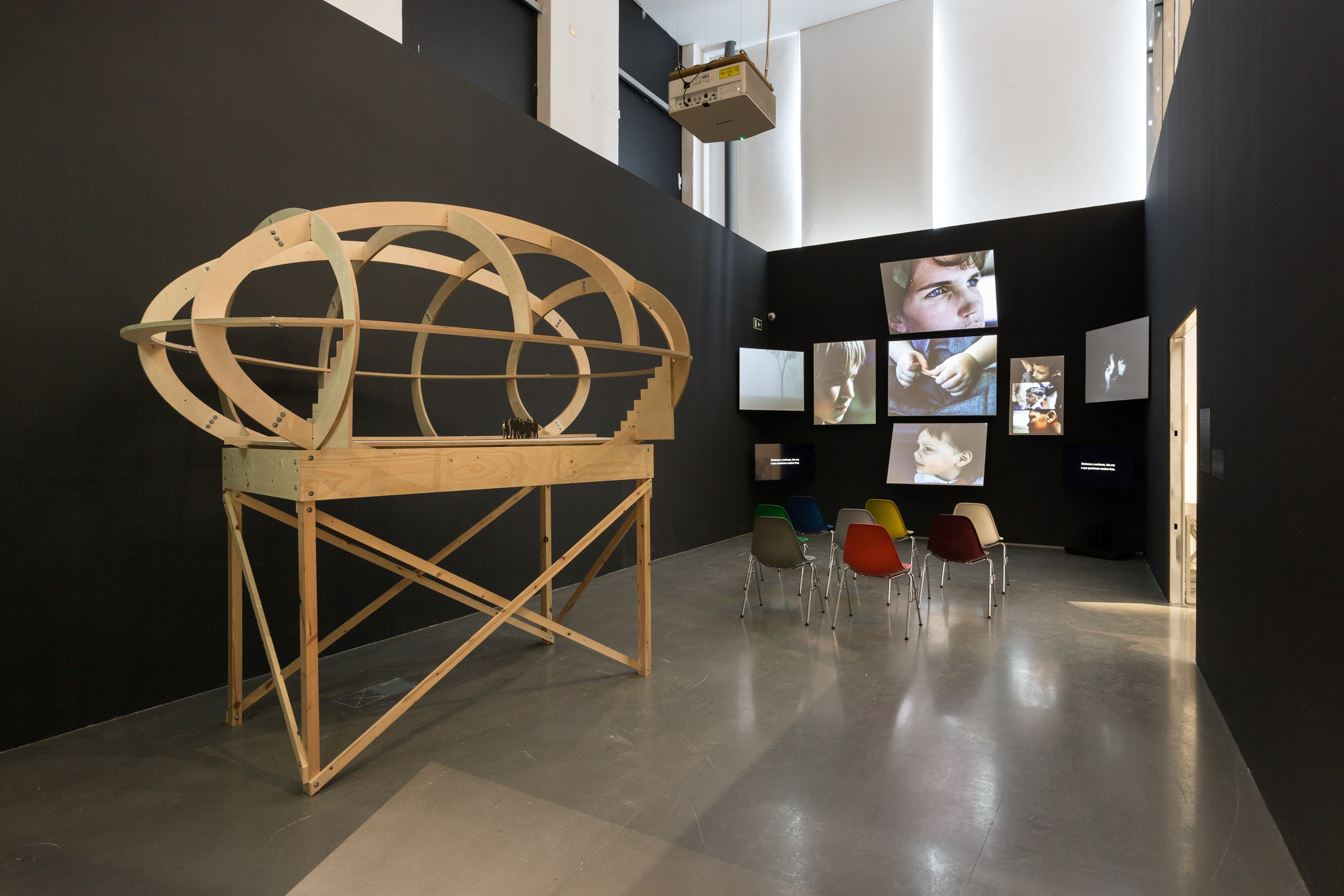
Central Tejo – MAAT
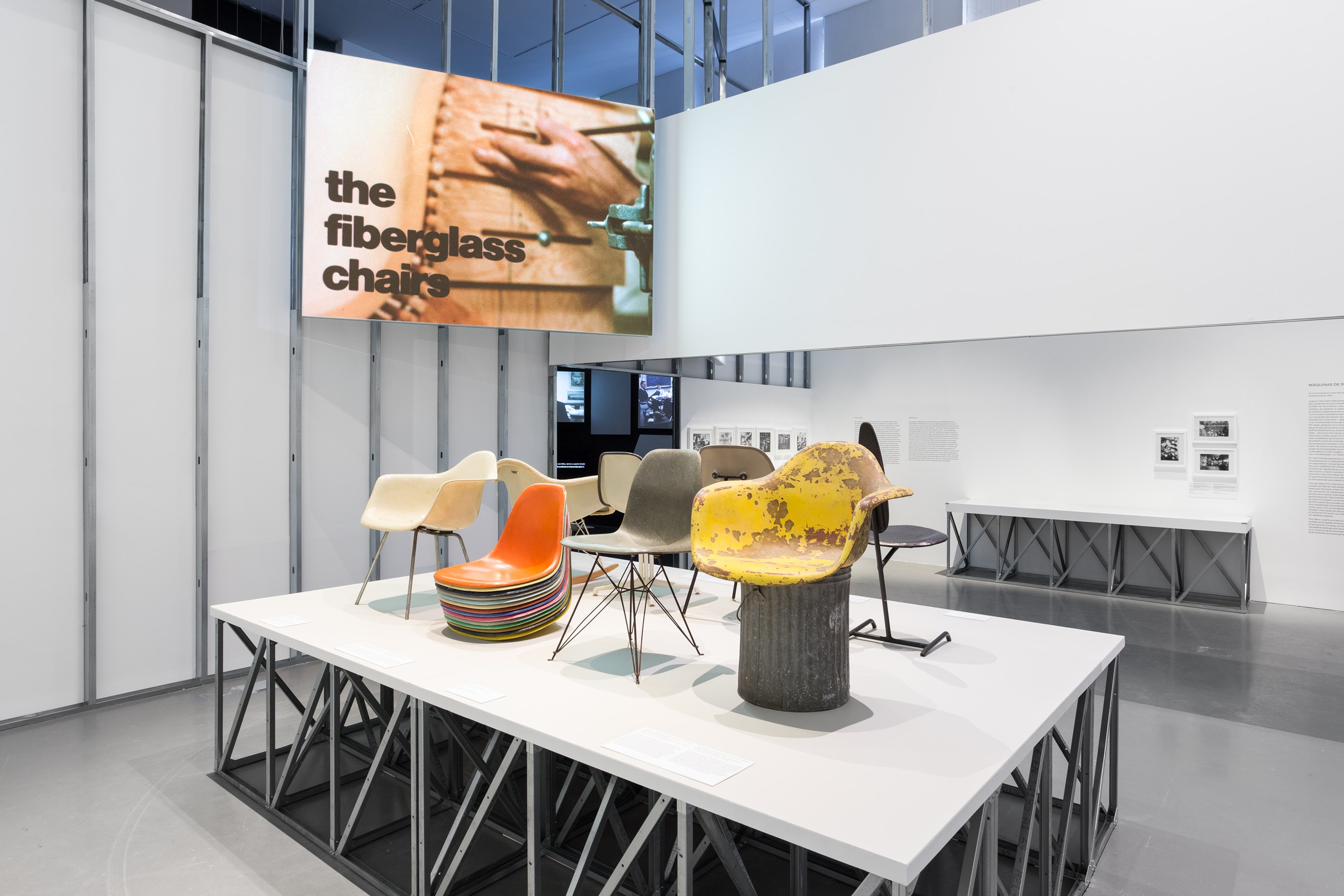
Central Tejo – MAAT
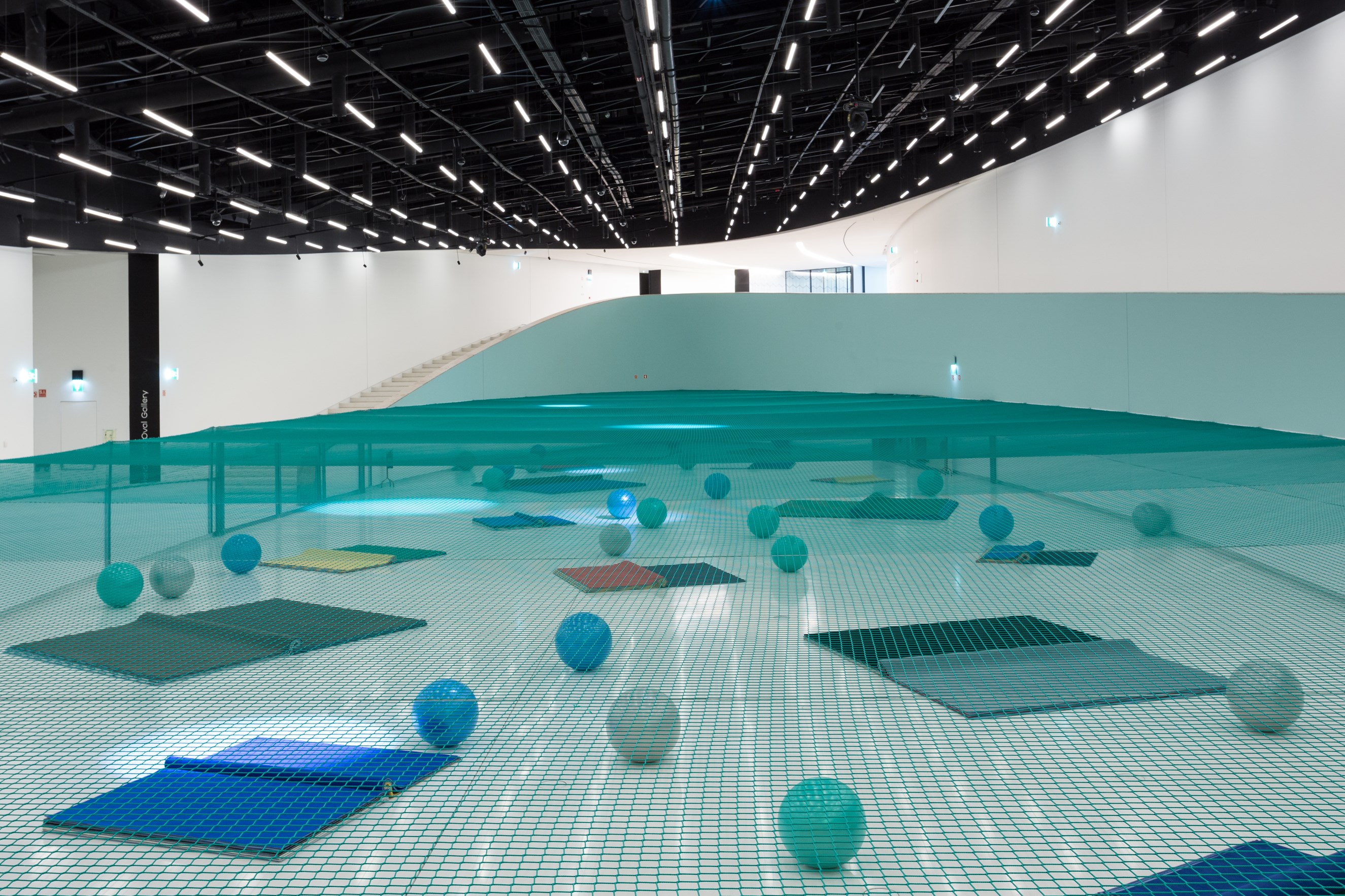
© Bruno Lopes
The time of architecture
It is also because of this (non) relationship with the Central Tejo that the new MAAT generates the greatest perplexities. Declared to be a complement to the power station, Amanda Levete’s building does not establish any significant empathy with it, resulting in an effect that is neither frank nor challenging, opting for an almost indifference.
In truth, the new MAAT embodies a well coded architectural tendency, what some call “blob architecture” or “blobitecture” 4, which mainly left its mark in the 80’s and 90’s of the 20th Century. Refusing rational, historical or spatial continuities with pre-existing urban building and fabrics, many examples of this biomorphic architecture, with its curved and fluid lines, populated different American and European cities during the iconic “party” that marked the last fin-de-siècle, with creations by architects such as Frank Gehry, Zaha Hadid, Daniel Libeskind and Peter Cook, or collectives such as Morphosis, Coop Himmelb(I)au and Future Systems – this last one formed in 1979, precisely by Amanda Levete and Jan Kaplicky.
In the last decade, and after a critical revision of this tendency, primarily conducted in European culture, many of those architectures (and their architects) turned to the new cities of China and the Middle East – Dubai, Abu Dhabi or Qatar – in other words, to places void of any historical sedimentation and in urgent need of these unrepeatable iconic gestures. The problem is that those same gestures became fastidiously repetitive, creating a cyclical sensation of déjà vu – from country to country, city to city – in a process of progressive deterioration of both the model and the quality of architecture. This phenomenon has now drained into the Belém riverfront, underlining how a wonderful opportunity to debate, experiment and interact with the industrial memory of the city has been squandered – let us once again refer to the notable example of the conversion and recent extension of the Tate Modern in London –, resulting in a dated proposal that will probably not withstand the “form of time”, to evoke George Kubler once more.
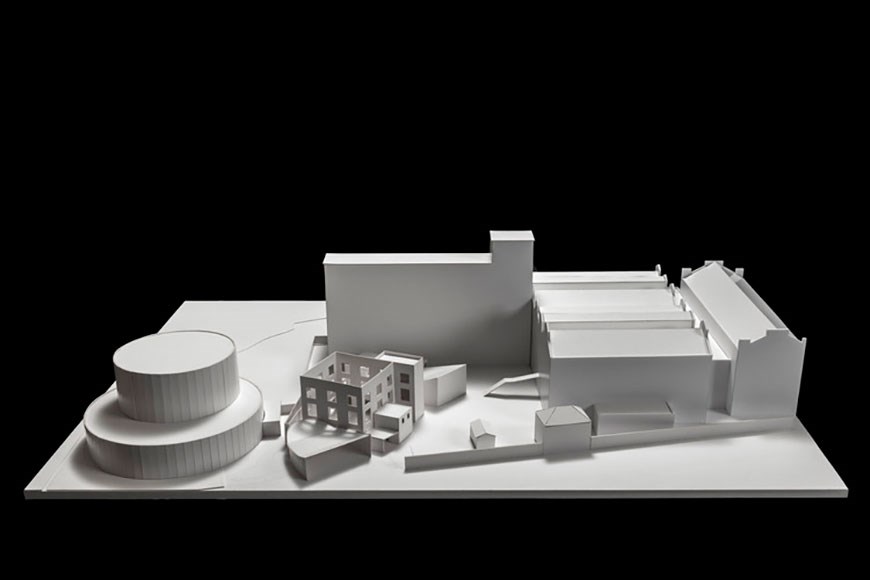
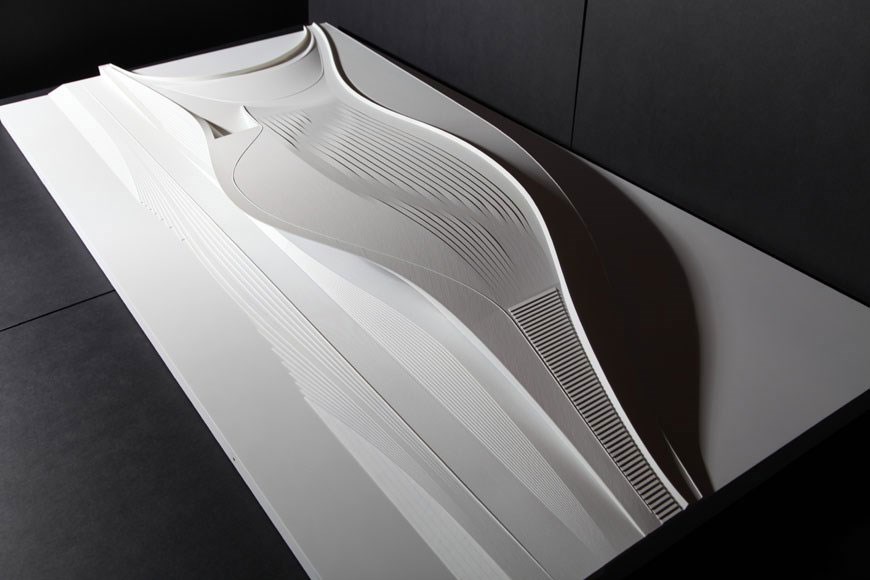
The time of time
Travelling across the riverside of the Tagus on that holiday afternoon, it was inevitable to establish a relationship between the new MAAT and the ephemeral pavilion of “The Form of Form”, implanted in the courtyard of the Central Tejo. Conceptualized as an exquisite corpse, composed of “pieces” of different works by the three architects invited by the Lisbon Triennale, the pavilion presented, in its exterior, a regular aluminium “skeleton”, in contrast with the purified sinuosity of the “internal spaces” it generated.
In its proclaimed formalism – “all architects are formalists”, as Mark Lee reminds us in the opening of this text – that pavilion seemed to openly dialogue with the apparent structure of the Central Tejo façade, which turns out to also be an exquisite corpse composed of distinct volumes constructed over time. Without disguising its contemporaneity, the pavilion still managed to establish an uncomplicated continuity with its pre existence, which somehow became a part of it.
Inadvertently, that fragile and ephemeral object, incapable of resisting the rigours of winter, would end up denouncing the anachronism of the telluric and onerous MAAT, absurdly confronting us with an inconvenient question: from the point of view of that unique place, which one of those objects actually deserved to remain, and which one should end up being disassembled? Historical time will tell. ◊
